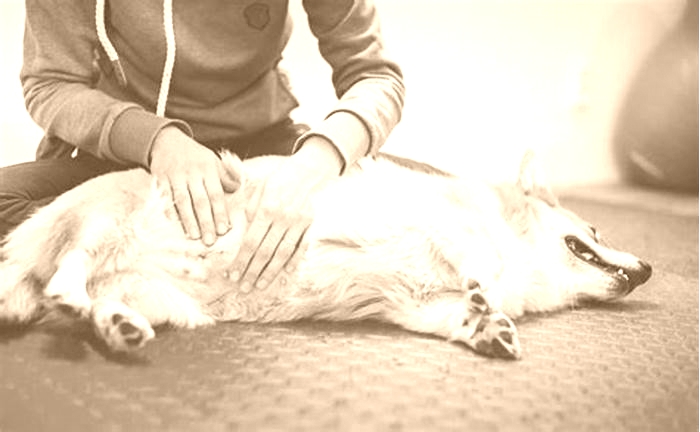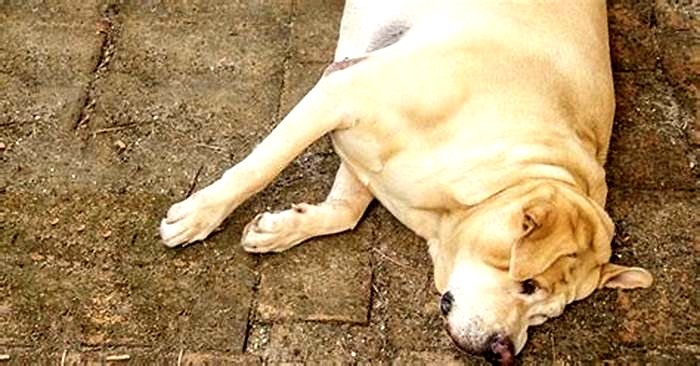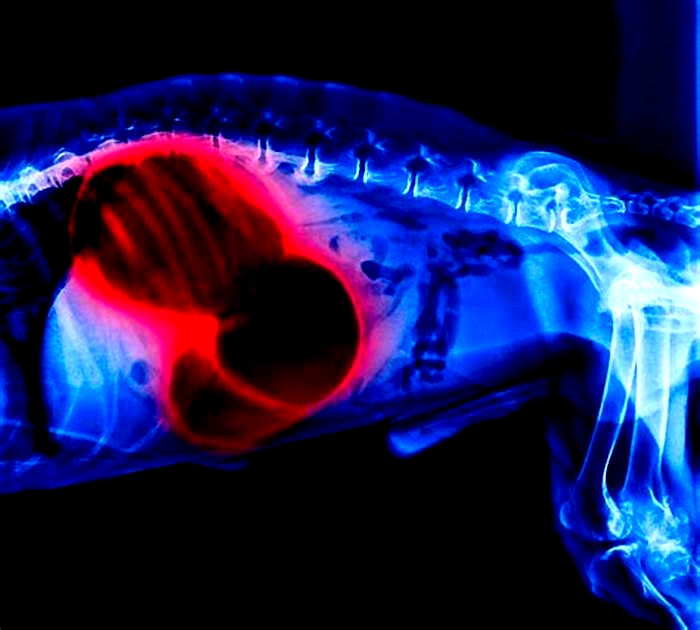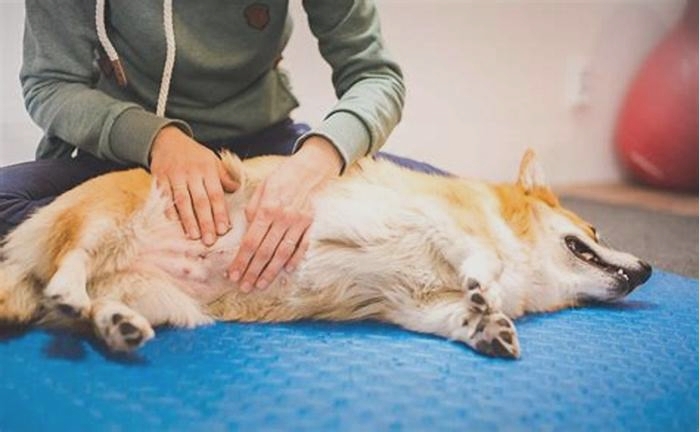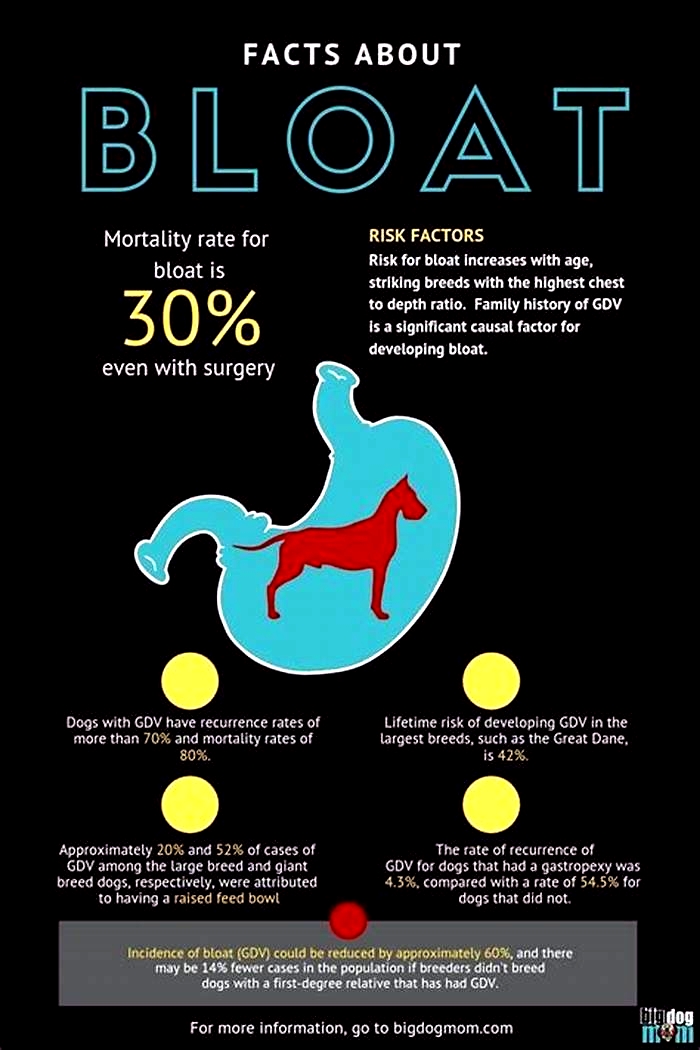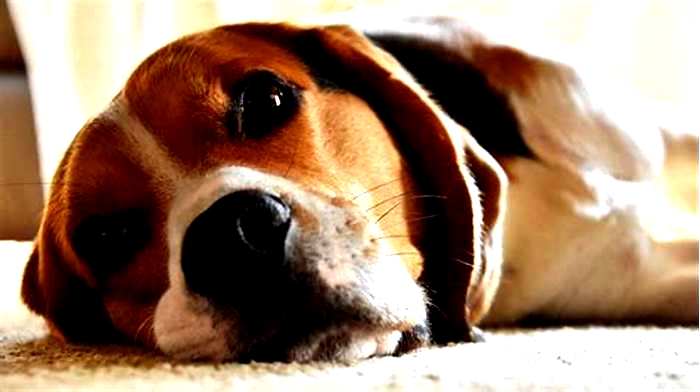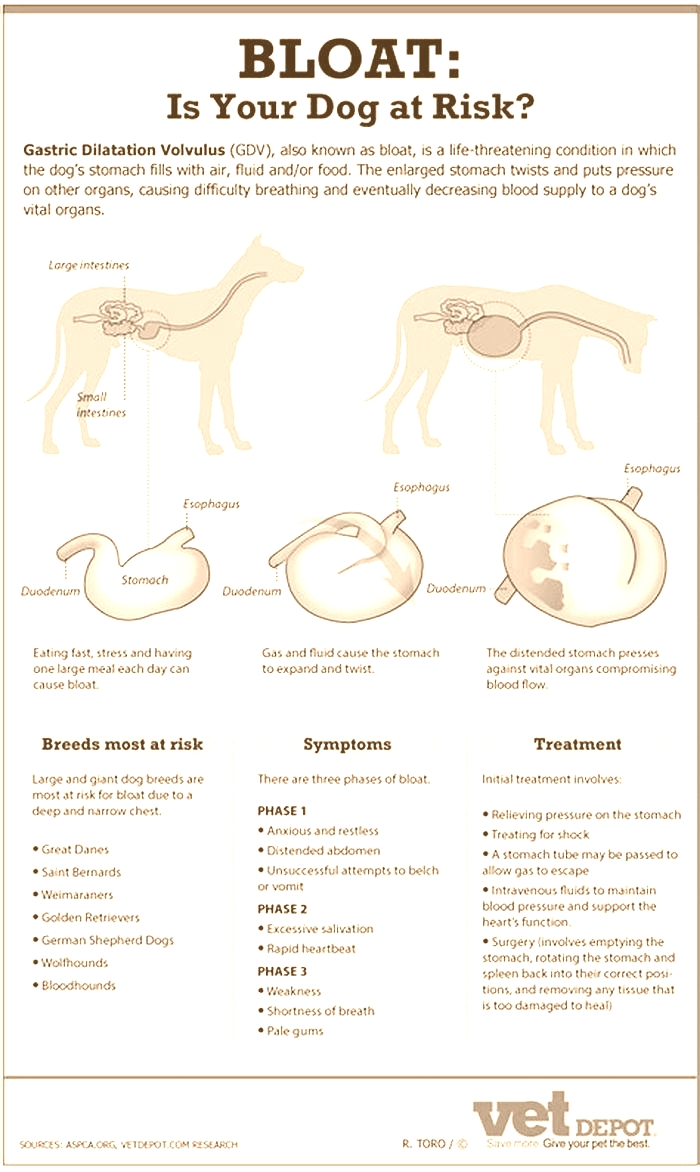Will my dog poop if he has bloat

Can a Dog with Bloat Still Poop? When Should I Be Concerned?
In most cases, a dog with bloat will not be able to poop. The twisting of the stomach will prevent anything from emptying. Depending on where the twist occurred, dogs suffering from bloat may have diarrhea, but there will be no hard stool.
You know the feelingyou have eaten way too much delicious food for dinner. Your stomach feels heavy and protrudes out further than it usually does. People get bloated all the time, often because of what they eat or drink. This condition quickly goes away within a few hours.
But does the same thing happen for dogs? Dog bloat is nothing like human bloat. Its a serious, even deadly condition.
For humans, bloating goes away quickly. For dogs, bloating causes intense pain and harmful side effects. Without proper treatment, bloat is deadly for dogs in a short amount of time.
To understand what your dog will do when they have bloat, it is important to understand what the condition is and how it affects their body.
What is Dog Bloat?
Dog bloat, otherwise known as gastric dilatation and volvulus, means that your dogs stomach is filled with gas.
The stomach initially fills with gas, which is also known as gastric dilatation. The stomach ultimately twists on itself at either end, which is called gastric volvulus. Nothing can get in or out of your dogs stomach after it has twisted shut on either end.
Gastric dilatation is harmful in itself, but gastric volvulus is especially dangerous to your dog. This torsion is especially dangerous because it restricts blood flow to the rest of the dogs body.
Dogs will quickly go into shock, as none of their internal organs or extremities are getting the blood supply they need. This condition is much more severe when the stomach has twisted on itself.
The stomach twisting also affects the other internal organs, like the pancreas and spleen, causing them to function improperly.
When the pancreas does not get the blood or oxygen it needs, it produces hormones that are toxic to your dog. One of these hormones may cause your dog to go into cardiac arrest.
Why Do Dogs Get Bloat?
Veterinarians are unsure of the direct cause of dog bloat. There is no conclusive evidence about what causes it to happen.
Veterinarians know which dogs are more likely to get bloat and some behaviors that contribute to a dogs likelihood of getting bloat, but it is hard to say exactly why it happens.
Here are a few things that could lead to bloat.
Breed
Breed is one of the biggest risk factors. Large or giant breed dogs with deeper chests like a Weimaraner, Saint Bernard, Gordon Setter, Irish Setter, Rottweiler, Standard Poodle, Doberman, and Great Dane are more likely to experience bloat.
The risk of bloat is much greater in these breeds, especially as they get older, but bloat can happen to any dog of any age.
Eating Habits
Dogs who often gulp down air as they are eating, because they are eating too quickly, are at a higher risk for bloat.
If you have more than one dog, or your dog is usually eating in the presence of other animals or people, they may eat quickly because they feel overwhelmed and anxious.
Your dog may try to finish their food as quickly as possible so nobody else can take it, leading to them ingesting too much air as they eat.
Of course, some dogs just love their food and want to gulp it down as quickly as possibleafter all, you like to eat delicious things, too! Using a puzzle feeder or other tool to slow down your dogs eating may help.
No matter what your dog eats, you can break their meal into smaller portions to force them to take their time while eating it.
You may also slow your dog down by feeding your dog several smaller meals throughout the day. This will help prevent them from becoming overly hungry from a large gap between meals and may slow down the rate at which they eat.
How Will I Know if My Dog Has Bloat?
Heaving
There are several signs and symptoms that indicate that your dog is suffering from bloat. Youll notice that your dog is heaving as if they are attempting to vomit, but nothing is coming out. Your dog will not be able to have a bowel movement either, as the twisting of the stomach prevents its contents from emptying.
Besides attempted vomiting, youll see your dog has an excess of saliva forming, a common symptom associated with nausea.
Restlessness
If your dog has bloat, they will be visibly uncomfortable. They will pace around, attempting to make themselves feel better. They will be restless and wont stay in one place for too long.
Their body is in severe distress, and it is painful for them to lie down or be still. Your dog will not be able to settle down, even when presented with their favorite bed, couch, or opportunity to snuggle with their human.
Stance
There is a particular stance dogs take on if they are suffering from bloat. They will stand with their elbows pointed outward, away from their body, with their neck extended out as far as possible.
As their stomach becomes more bloated and filled with air, it puts pressure on their other internal organs, including the lungs, making it difficult for them to breathe.
This stance is their attempt to relieve some of this pressure and breathe normally. Of course, this position is not effective in getting more air into the lungs or feeling more comfortable.
Panting
Because of the pressure on their lungs, your dog will have a difficult time breathing. They are also in a considerable amount of pain, which will increase the rate of their breathing.
Bloat causes metabolic abnormalities, which will cause them to breathe much faster than usual.
Youll notice the above signs and symptoms, as well as excessive panting from your dog as their body shuts down on them.
Distended Abdomen
You may not notice if your dogs abdomen is visibly bloated or distended, especially if they have a deeper chest.
However, when you tap on their stomach, you will hear and feel that it is bloated. It will sound like you are tapping on a steel drum.
When you lay your hand on their stomach, it will feel hard, tight, and distended. If you notice that your dogs abdomen feels like this, do not wait to call the veterinarian.
It may be difficult to notice this symptom if your dog has a lot of hair or is significantly overweight.
How Do I Treat Bloat?
There is no possible way to treat dog bloat at home. Medicine or other over-the-counter treatments are completely ineffective for this condition.
If your dog is experiencing bloat outside of your vets regular hours, you need to take them to an emergency veterinarian right away. This condition cannot wait until the next day to be resolved.
Emergency Veterinarian
If possible, call the emergency veterinarian on your way in so they know to expect you. Bloat always requires surgery, so you want to be sure the hospital is equipped to handle your dog when you arrive.
The team will get to work right away to stabilize your dog, especially if they are already in shock. They will run diagnostic tests like an EKG, blood pressure measurement, and take a blood sample.
An X-Ray will be performed to confirm that your dog has bloat and to make sure they have no other conditions that would prevent surgery from being successful.
Surgery
Your dog will then need surgery to repair their stomach. The built-up air will be released from their stomach, and any existing damage will be repaired.
The dog will also have a gastropexy procedure, which means that the stomach is tacked to the abdominal wall to prevent it from twisting again.
This does not mean your dog will not bloat again, but it does mean their stomach will not twist if it happens.
After the surgery, the dog will need continuous monitoring overnight at the veterinarian to ensure no complications from the surgery.
While dog bloat is a severe and scary condition, your dog is likely to survive if you notice the condition early and bring them into the veterinarian right away. The condition will not resolve on its own, so it is critical to get your dog to the vet as soon as you notice signs and symptoms. Being aware of what bloat is and the common symptoms is the best step to preventing an unexpected tragedy.
Recommended For You
Bloat (or GDV) in Dogs: What Is it and How Is it Treated?
If you believe your dog is suffering from symptoms of bloat, call your vet or emergency vet immediately.
I hate this disease. When I first started as a vet, we gave a dog with bloat a 50-50 chance if he could walk into the hospital. Many were too weak and had to be carried in. They often died. Now, 30 years later, bloat still kills about 30 percent of the dogs it affects, even after extremely intensive treatment.
I hope you never see this disease in your dog, but learning about what it is, why it happens, and how its treated may help your dog fall into the percentage of dogs that survive. Read on for common questions about bloat and new perspectives on prevention.
What Is Bloat in Dogs?
Bloat, also known as gastric dilatation-volvulus (GDV) complex, is a medical and surgical emergency.
As the stomach fills with air, pressure builds, stopping blood from the hind legs and abdomen from returning to the heart. Blood pools at the back end of the body, reducing the working blood volume and sending the dog into shock.
If this isnt enough, there is yet another scary thing that happens, and it is devastating to see. As the stomach flips, it drags the spleen and pancreas along with it, cutting off the blood flow. The oxygen-starved pancreas produces some very toxic hormones. One, in particular, targets the heart and stops it cold. In fact, a dog can go through successful treatment and seem to be out of danger, when suddenly the heart stops.
Even in the mildest case of bloat, which is extremely rare, dogs die without treatment.
What Are the Signs of Bloat in Dogs?
- An enlargement of the dogs abdomen
- Retching
- Salivation
- Restlessness
- An affected dog will feel pain and might whine if you press on his belly
Without treatment, in only an hour or two, your dog will likely go into shock. The heart rate will rise and the pulse will get weaker, leading to death.
Why Do Dogs Bloat?
This question has perplexed veterinarians since they first identified the disease. We know air accumulates in the stomach (dilatation), and the stomach twists (the volvulus part). We dont know if the air builds up and causes the twist, or if the stomach twists and then the air builds up.
How Is Bloat Treated?
Veterinarians start by treating the shock. Once the dog is stable, hes taken into surgery. We do two procedures. One is to deflate the stomach and turn it back to its correct position. If the stomach wall is damaged, that piece is removed. Second, because up to 90 percent of affected dogs will have this condition again, we tack the stomach to the abdominal wall (a procedure called a gastropexy) to prevent it from twisting.

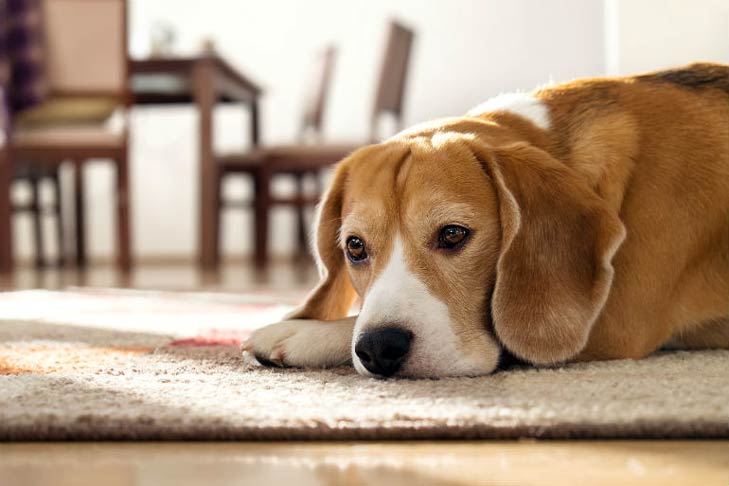
How Can Bloat Be Prevented?
For years, veterinarians have been looking for ways to prevent bloat. If you search on the Internet, you will find a host of suggestions, but much of it is folklore. We have to look at what is scientifically proven and implement those strategies.
Risk of bloat is correlated to chest conformation. Dogs with a deep, narrow chest very tall, rather than wide suffer the most often from bloat. Great Danes, who have a high height-to-width ratio, are five-to-eight times more likely to bloat than dogs with a low height-to-width ratio.
In addition to Great Danes, large- or giant-breed dogs at greatest risk include St. Bernards, Weimaraners, Irish Setters and Gordon Setters, Standard Poodles, and Doberman Pinschers. Males are twice as likely to bloat as females. Neutering or spaying has no effect on risk.
If a dog has relatives (parents, siblings, or offspring) who have suffered from bloat, there is a higher chance he will develop bloat. These dogs should not be used for breeding.
Certain dietary ingredients have been blamed over the years, but the data is inconclusive. This is because most large-breed dogs are fed a cereal-based diet, so making a statement that those diets are to blame is difficult. However, we do know that foods containing soybean meal or having oils or fats in the first four ingredients increase the risk by fourfold.
Over the years, I have seen studies that show that food bowls on the floor cause more cases of bloat, but a few years later this was debunked, and elevated food bowls are now known to be just as much of a risk. With these conflicting results, a solid recommendation cant be made.
Dogs fed one meal a day are twice as likely to bloat as those fed two meals a day. Rate of eating is also a contributor. Fast eaters have five times the risk than dogs that are slow eaters. Using slow feeder bowls with fingers (or center posts) or putting large rocks in the bowl slows dogs down physically, but its also important to address the anxiety that comes with feeding around other dogs, because that can be a risk factor. Stressed dogs and those that are hyperactive are more likely to bloat. Separating dogs at feeding times may help reduce anxiety and stress surrounding food. Unhappy or fearful dogs are twice as likely to bloat as those that are happy.
A recent trend is to perform a preventive surgical gastropexy on an at-risk dog. Often performed when a dog is sterilized, some veterinarians now do this procedure laparoscopically to reduce the invasiveness. Unfortunately, the hardest part is determining which dogs are at a high enough risk to warrant this surgery. It could be said that all the above-mentioned breeds should have this surgery performed. We just dont know if it is cost-effective. Consult with your veterinarian about this option.
We cant prevent all cases of bloat, but by implementing some of the above techniques, you may be able to reduce your dogs risk. If your dog shows signs of bloat, take him to a veterinarian or an emergency pet clinic immediately.

